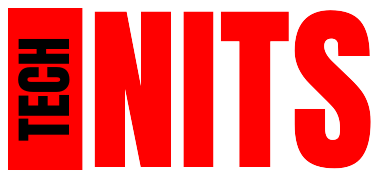The rapid pace of technological advancement has fundamentally reshaped the way we live, work, and interact with the world around us. From artificial intelligence and cloud computing to blockchain and the Internet of Things (IoT), innovative tech solutions are now more accessible than ever. These technologies have not only transformed industries but have also empowered individuals to explore, create, and solve problems more efficiently. The phrase “at your fingertips” has never been more literal as we access groundbreaking technologies through our smartphones, laptops, and other connected devices. This article delves into the innovative tech solutions available today, their impact on various sectors, and how they’re shaping the future.
The Age of Accessibility
One of the most remarkable aspects of modern technology is its accessibility. Just a few decades ago, tools like AI or machine learning were confined to the labs of elite tech companies and universities. Today, these technologies are available to businesses of all sizes and even individuals. Platforms like OpenAI, Google Cloud, and AWS provide user-friendly interfaces that allow anyone with a laptop and internet connection to deploy AI models, analyze data, and build scalable applications.
For example, tools like Canva and Adobe Express leverage AI to help users create stunning graphics without requiring professional design skills. Similarly, applications like Grammarly utilize natural language processing to refine written communication, making professional-grade solutions available to the everyday user. These innovations empower creativity, enhance productivity, and lower the barriers to entry for people across industries.
Transforming Industries
1. Healthcare
The healthcare industry has witnessed some of the most profound transformations due to innovative tech solutions. Artificial intelligence, for instance, is revolutionizing diagnostics and treatment plans. AI algorithms can now analyze medical images with accuracy levels rivaling, or even exceeding, those of trained radiologists. Wearable devices, such as fitness trackers and smartwatches, monitor vital signs and alert users to potential health issues in real time.
Moreover, telemedicine platforms are making healthcare more accessible to remote and underserved areas. Patients can consult with doctors, receive prescriptions, and even access mental health services without leaving their homes. This seamless integration of technology ensures that healthcare is more efficient, equitable, and patient-centric.
2. Education
The educational landscape has been significantly impacted by technology, particularly in the wake of the COVID-19 pandemic. Online learning platforms like Coursera, Khan Academy, and Duolingo have democratized education, allowing millions to learn new skills at their own pace. Virtual reality (VR) and augmented reality (AR) are now being used to create immersive learning experiences, making complex topics like anatomy or physics easier to understand.
Additionally, AI-driven tools provide personalized learning experiences. For instance, platforms like DreamBox and Smart Sparrow adapt their content based on a student’s performance, ensuring optimal learning outcomes. These innovations bridge educational gaps and prepare students for a tech-driven world.
3. Business and Commerce
Businesses are leveraging tech solutions to streamline operations, enhance customer experiences, and drive growth. Cloud computing services have enabled organizations to scale without significant upfront investments in hardware. Tools like Slack, Trello, and Microsoft Teams facilitate collaboration across distributed teams, ensuring productivity in a hybrid work environment.
E-commerce platforms like Shopify and WooCommerce empower small businesses to reach global markets. Advanced analytics tools provide insights into customer behavior, enabling companies to make data-driven decisions. Furthermore, chatbots and AI-powered customer service tools ensure 24/7 support, improving customer satisfaction and loyalty.
Empowering Individuals
Beyond transforming industries, tech solutions are making life easier and more efficient for individuals. Smart home devices like Amazon Alexa, Google Nest, and Philips Hue allow users to control their home environment with simple voice commands or smartphone apps. Fitness enthusiasts can track their progress with wearables like Fitbit, while hobbyists can explore passions like photography or music production using accessible software tools.
On a more personal level, apps like Calm and Headspace help users manage stress and improve mental health. Language-learning apps such as Babbel and Rosetta Stone enable people to acquire new languages with ease, fostering cross-cultural understanding and communication. These tools enhance daily life, making personal goals more achievable than ever.
The Road Ahead
As technology continues to evolve, the possibilities seem boundless. Emerging trends like quantum computing, 5G connectivity, and augmented reality promise to unlock even greater potential. Quantum computing, for instance, could revolutionize fields like cryptography and materials science, solving problems that are currently insurmountable. Meanwhile, 5G technology will enable faster and more reliable connections, supporting innovations in IoT, autonomous vehicles, and smart cities.
However, with these advancements come challenges. Issues like data privacy, cybersecurity, and the ethical use of AI must be addressed to ensure technology serves humanity responsibly. Governments, corporations, and individuals will need to collaborate to create policies and practices that balance innovation with accountability.
Conclusion
“Innovative tech solutions at your fingertips” is not just a catchy phrase but a reflection of the transformative power of modern technology. From improving healthcare and education to streamlining business operations and enhancing daily life, these solutions are shaping a brighter, more connected future. The accessibility of technology empowers individuals and organizations to innovate, create, and solve problems in ways that were unimaginable a generation ago. As we look ahead, the challenge will be to harness this potential responsibly, ensuring that technology remains a force for good in the world.


